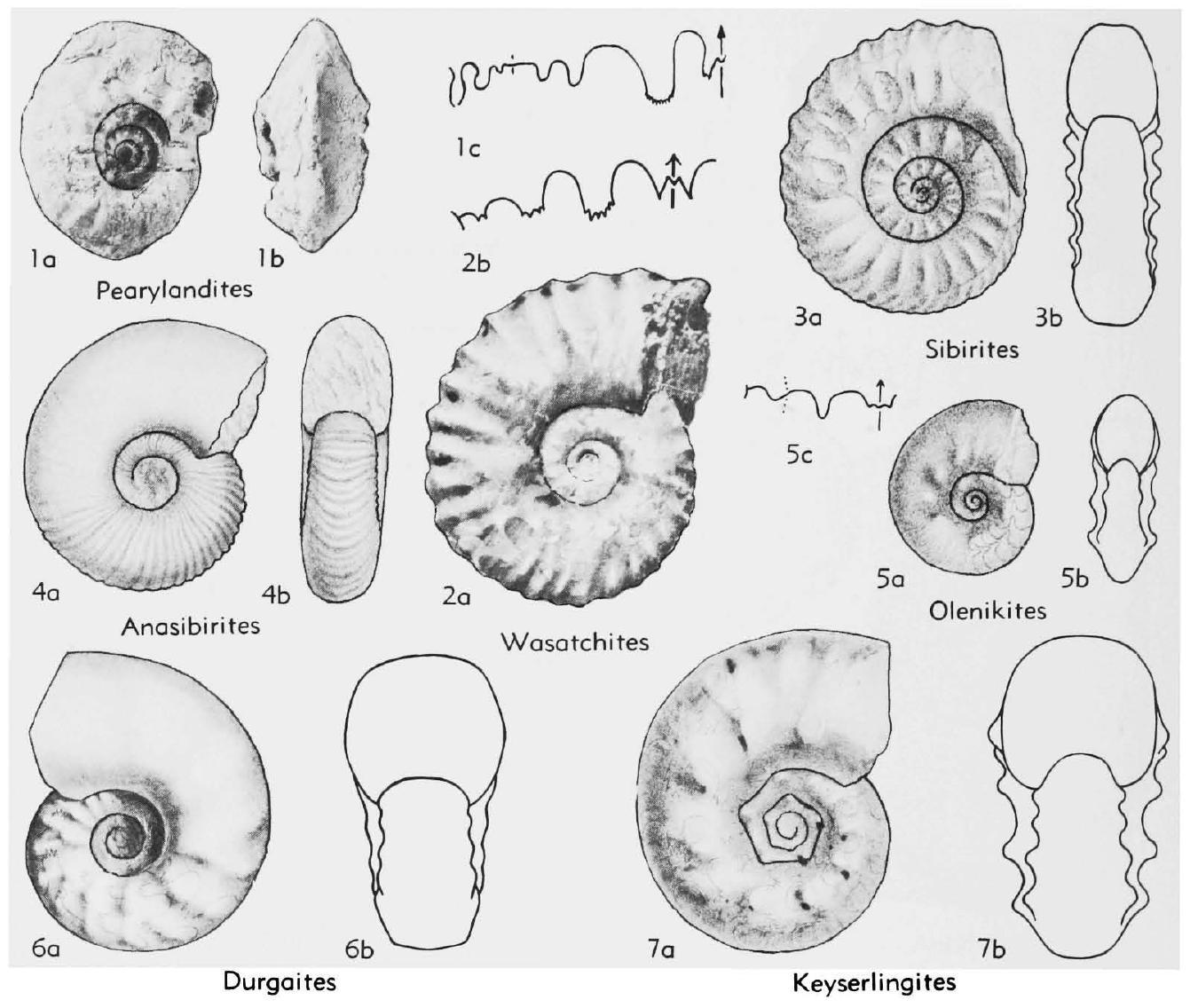Welcome to the Treatise on Invertebrate Paleontology!
Please enter a genera name to retrieve more information.

Durgaites
Classification
Phylum:
Mollusca
Class:
Cephalopoda
Subclass:
Ammonoidea
Order:
Ceratitida
Suborder:
Ceratitina
Superfamily:
Noritaceae
Family:
Sibiritidae
Formal Genus Name and Reference:
Durgaites DIENER, 1905
Type Species:
Keyserlingites dieneri Mojsisovics, 1902 (=Ceratites subrobustus Diener, non MOJS., 1895)
Images
(Click to enlarge in a new window)
Fig. 178, 6. °D. dieneri (MoJs.), U.Scyth., Himalaya; 6a,b, X0.2 (102°)
Synonyms
Anastephanites
Geographic Distribution
Himalaya-Timor-Calif.
Age Range
Beginning Stage in Treatise Usage:
L.Trias.(U.Scyth.)
Beginning International Stage:
Olenekian
Fraction Up In Beginning Stage:
0
Beginning Date:
249.88
Ending Stage in Treatise Usage:
M.Trias.(Anis., Beyrichitan)
Ending International Stage:
Anisian
Fraction Up In Ending Stage:
50
Ending Date:
244.08
Description
Like Keyserlingites but with coronate inner whorls and tendency to develop ventrolateral nodes after lateral nodes have shifted to below middle of whorl side; venter arched to subtabulate, with transverse ribs.
References
Museum or Author Information
Classification
Phylum:
Mollusca
Class:
Cephalopoda
Subclass:
Ammonoidea
Order:
Ceratitida
Suborder:
Ceratitina
Superfamily:
Noritaceae
Family:
Sibiritidae
Formal Genus Name and Reference:
Durgaites DIENER, 1905
Type Species:
Keyserlingites dieneri Mojsisovics, 1902 (=Ceratites subrobustus Diener, non MOJS., 1895)
Images
(Click to enlarge in a new window)
Fig. 178, 6. °D. dieneri (MoJs.), U.Scyth., Himalaya; 6a,b, X0.2 (102°)
Synonyms
Anastephanites
Geographic Distribution
Himalaya-Timor-Calif.
Age Range
Beginning Stage in Treatise Usage:
L.Trias.(U.Scyth.)
Beginning International Stage:
Olenekian
Fraction Up In Beginning Stage:
0
Beginning Date:
249.88
Ending Stage in Treatise Usage:
M.Trias.(Anis., Beyrichitan)
Ending International Stage:
Anisian
Fraction Up In Ending Stage:
50
Ending Date:
244.08
Description
Like Keyserlingites but with coronate inner whorls and tendency to develop ventrolateral nodes after lateral nodes have shifted to below middle of whorl side; venter arched to subtabulate, with transverse ribs.
